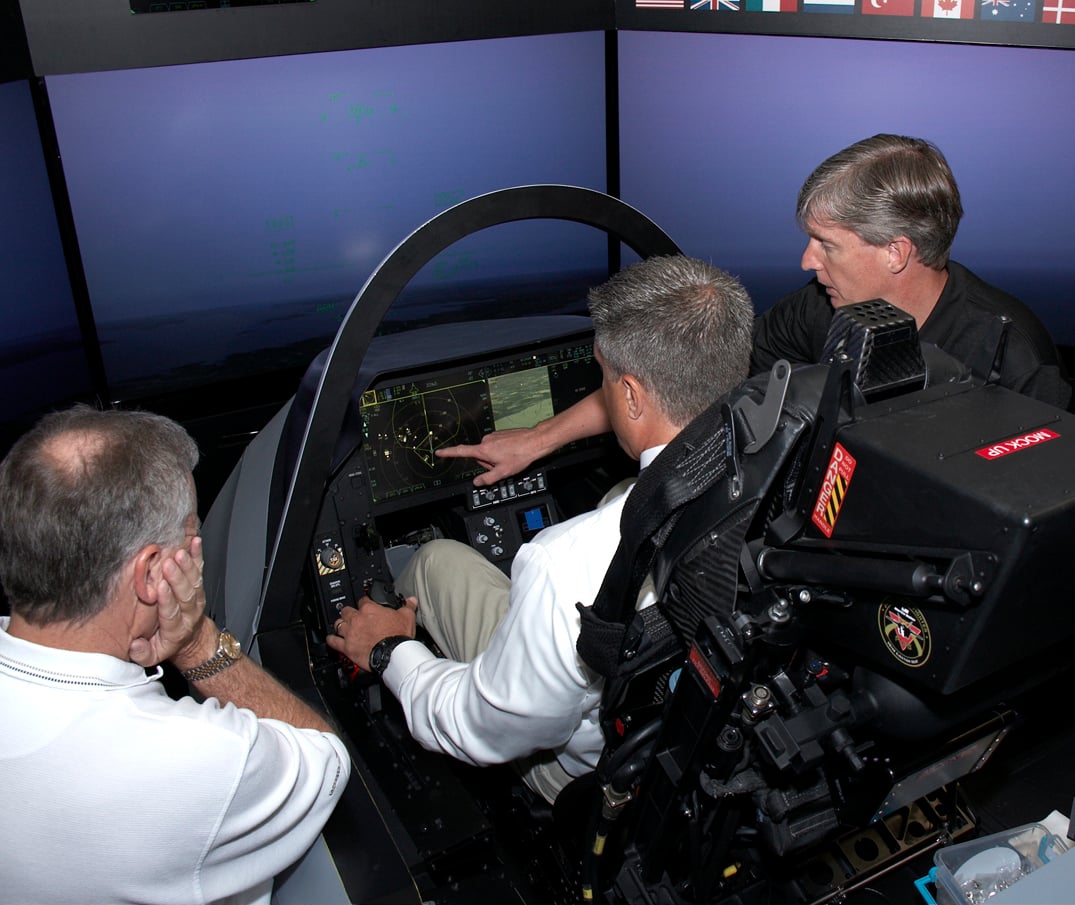
[Northrop Grumman Photo]
With minimal coaching, after two minutes I had landed safely on the flight deck of a U.S. Navy ship. Though I briefly felt pride after my landing, I quickly realized that a computer had done all of the hard flying for me.
Computers and cockpits are nothing new, but with the proliferation of unmanned aerial vehicles and the degree to which computers control piloted aircraft today, policy makers and military leaders are asking when pilots can be removed completely from combat aircraft.
The F-35 Lightning II Joint Strike Fighter has over 9 million lines of computer code controlling its flight surfaces, engine and weapon systems. That’s nine times the programming in its brainy cousin, the F-22 Raptor. If the F-22 is smart, the F-35 is a wunderkind.
Lockheed Martin would not confirm that it may be developing an unmanned — or optionally manned — version of the F-35. “Our Skunk Works are constantly looking at all kinds of things,” said, Bob Rubino, Lockheed’s director of Washington operations for the JSF program.
Part of the debate over military aircraft acquisitions is whether the military should cut spending on manned aircraft in favor of innovating unmanned combat aircraft. Based on what Lockheed Martin demonstrated Wednesday, manned and unmanned combat aircraft may be much less of one-or-the-other proposition.
An optionally manned F-35 would hold many advantages. With a pilot in its seat, the aircraft can concentrate on the task of flying while the pilot gathers intelligence or operates the aircraft’s extensive command and control suite. Without a human in the cockpit, the aircraft can assume riskier mission profiles. For example, the F-35 can mount external pylons that increase its weapons payload from 5,200 pounds to 18,000 pounds. This increased lethality comes at a cost — decreased stealth. Such dangerous mission profiles are the bread and butter of unmanned aircraft.
Pursuing an unmanned (or remotely piloted) F-35 makes sense from an innovation perspective. With a proven design and as the first aircraft that is “software defined,” the F-35 could act as a bridge to test remotely operated combat aircraft. The lessons gained from writing the software to take humans out of the F-35 could be applied to subsequent unmanned combat aircraft.
The discussion of the future of naval aviation often presents a false dichotomy: either we continue to pursue traditional manned aircraft or we invest to speed production of new systems like the Unmanned Carrier Launched Airborne Surveillance and Strike System (UCLASS). There is a third way: one that leverages current investments to develop future capabilities.




